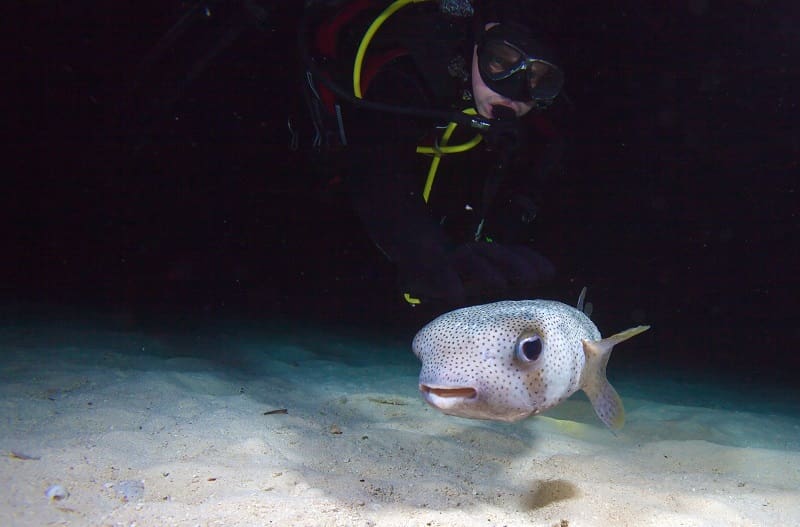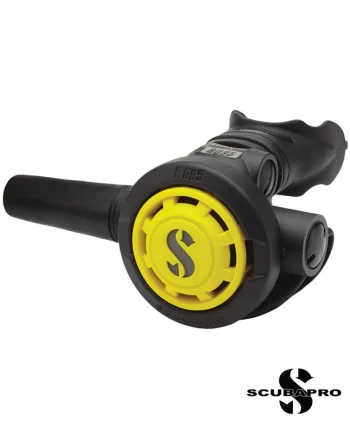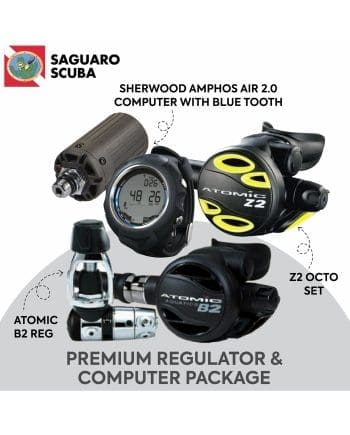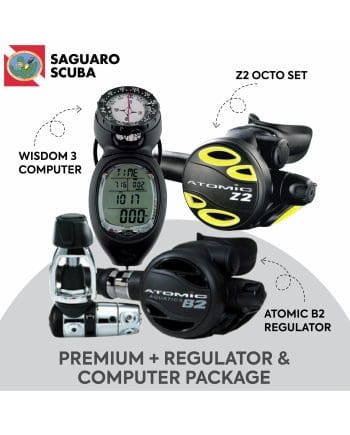Tips for Night Photography
It is usually a good idea to be comfortable diving at night before you take the plunge into night – time underwater photography. Diving at night, and especially filming at night is a completely different experience to when there is light, and at times can be intimidating. Creatures of the night that you usually don’t get to see begin to emerge, and predate or are predated upon. Sharks begin to feed, and bioluminescence shimmers in the oily black. Make sure you have your buddy, a spare light, and enjoy the unique experience.
Have your camera settings (and accessories) ready
Usually the internal flash on your camera is not strong enough to penetrate the darkness of night, at least not enough to be particularly effective. For that reason it is essential to purchase an external strobe or, ideally, two for your camera such as the Ikelite DS-160 and a focus light to allow the ability to see before capture. Having a fast shutter speed with strobes is a good idea, allowing sharper images and no distortion. In addition, for those who wish to film, a video light is a fantastic option, allowing a wide amount of light to illuminate your subjects. The Keldan Video 8M Flux is a quality choice allowing over 6000 lumens of lights and 45 minutes constant run time. Make sure you know where your settings are before descending at night. Some companies make glow-in-the-dark labels for ease of use. While most underwater subjects at night tend to be macro, there is opportunity for the wide angle. Mega fauna, such as sharks and mantas can be abundant at night, so make sure your strobes are strong, and you capture the entire animal in the shot.
Be aware of nocturnal marine species behaviour
Not just for better images, but also for safety, it is important to understand the conditions of the environment when you dive at night. Enter the water at dusk to allow time to get used to the camera, and in turn witness the underwater environments change from light to dark. In some areas sharks become more curious at night, so listen to the instructions of the dive guide for safety. Crustaceans such as shrimp, crabs and krill and cephalopods such as octopus and squid seem less deterred at night, allowing better images. Rare bioluminescent invertebrates and plankton of the deep appear over drop offs in a phenomenon seen during black water diving. Many creatures are drawn to the light of the strobes or video light, so be prepared to be covered with krill or smaller fish seeking protection. Make sure to be patient, spend time with the underwater flora and fauna, allowing time to capture rare and undocumented behaviour.
Sale Products
-
ScubaPro R095 Octopus
EAN: 4048336292993Original price was: $199.00.$150.00Current price is: $150.00. Add to cartSKU: 11.330.400
-
Atomic B2 Regulator & Z2 Octo Set With Amphos Air Wrist Computer (Rental Sales)
MSRP: $2,726.39You save 59%Original price was: $1,599.00.$1,095.00Current price is: $1,095.00. Add to cartSKU: RENTAL-REG- B2-1
-
Atomic B2 Regulator, Z2 Octo Set With Wisdom 3 Computer (Rental Sales)
MSRP: $1,919.39You save 48%Original price was: $1,395.00.$995.00Current price is: $995.00. Add to cartSKU: RENTAL-REG- B2
-
Atomic Z2 Reg/Octo With Oceanic VEO Computer (Rental Sales)
MSRP: $1,319.85You save 39%Original price was: $999.95.$799.00Current price is: $799.00. Add to cartSKU: RENTAL-REG-Z2
About The Author
Chris Vyvyan-Robinson
Born in London, England; Chris’ passion for photography and videography started from an early age. Over the last 20 years he has travelled to 5 of the 7 continents, including a year in South and Central America.
Chris’s passion is documenting the underwater environment and the creatures that inhabit that ecosystem. Over the past 4 years, while graduating from university with a degree in Film & Journalism, he has worked in Honduras, Indonesia and The Azores as a Divemaster & Guide.
Now an award winning filmmaker, Chris’ aspiration is to become a natural history cameraman.
Chris writes scuba diving articles for ScubaDiveMarketing.com who provide design, development and marketing to dive shops around the world.








